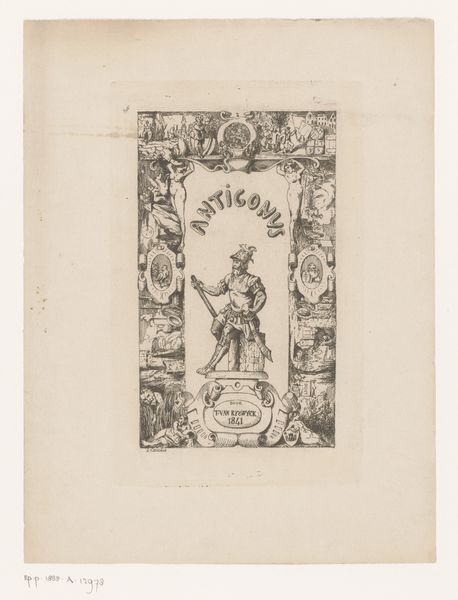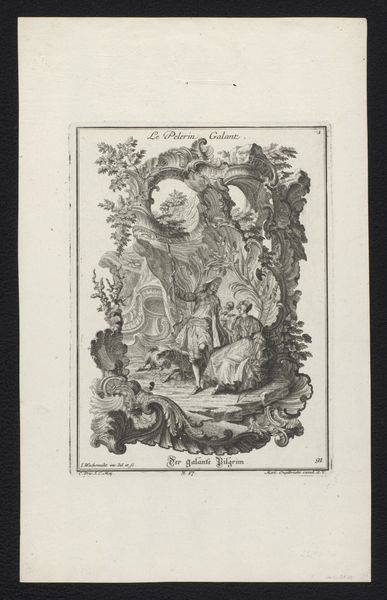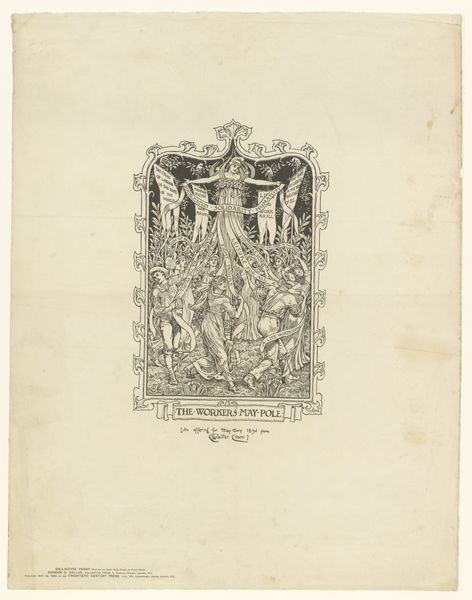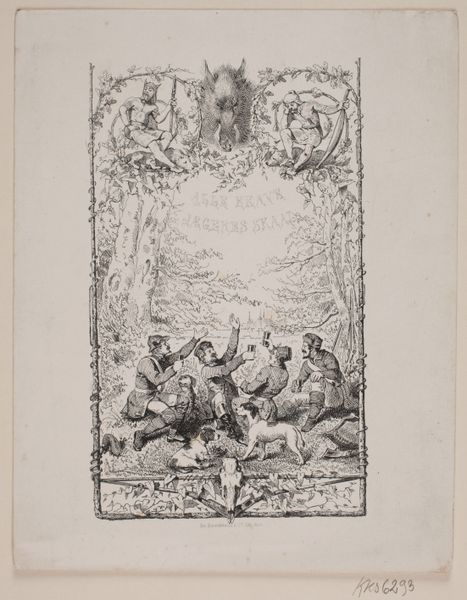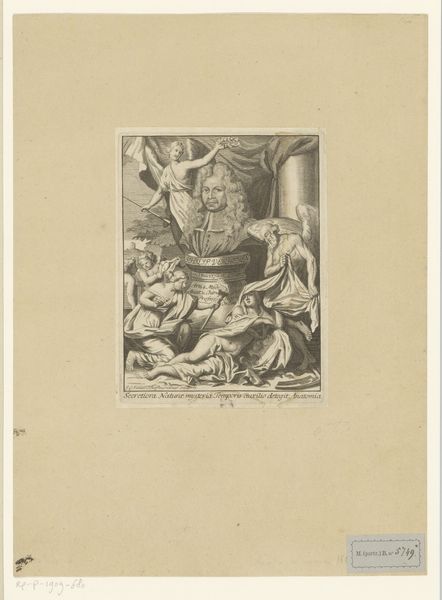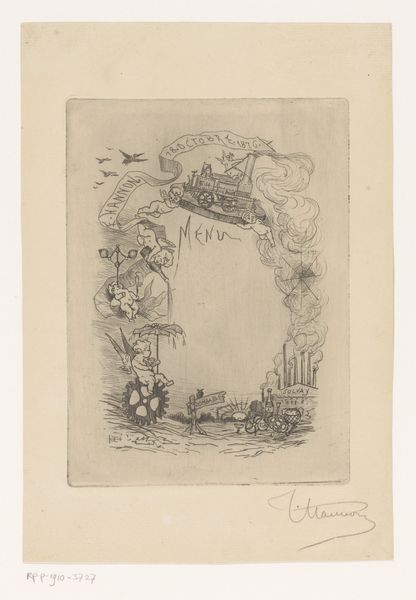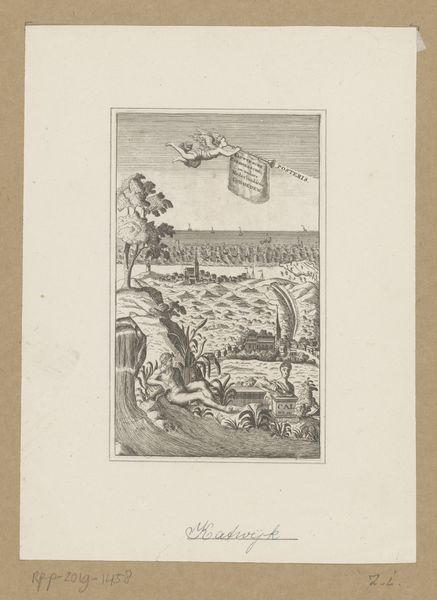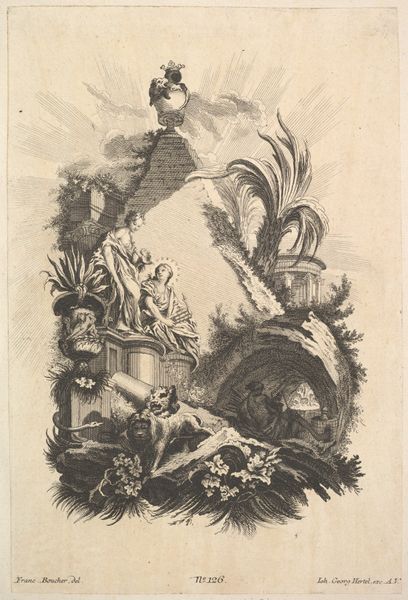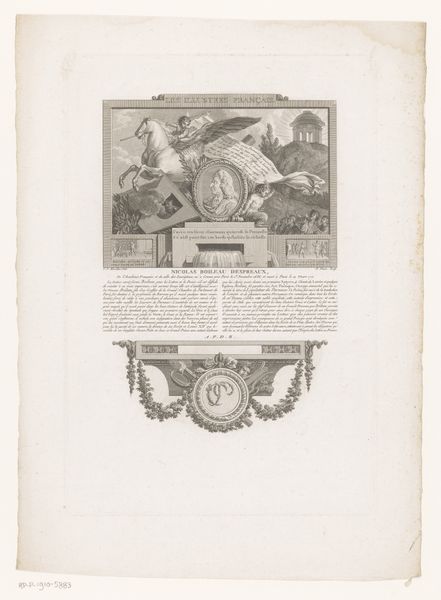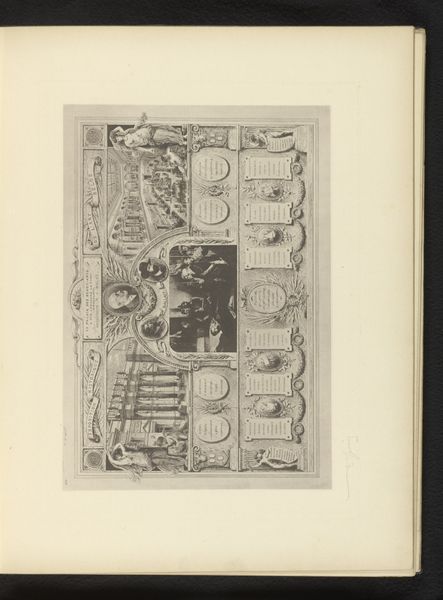
Various ornamental fragmenst including a frieze, a soffit and parts of columns 1751 - 1754
0:00
0:00
drawing, print, engraving, architecture
#
drawing
#
baroque
# print
#
geometric
#
line
#
history-painting
#
engraving
#
architecture
Dimensions: 395 mm (height) x 255 mm (width) (plademaal), 395 mm (height) x 255 mm (width) (billedmaal)
Curator: Instantly, it strikes me as both precise and fantastical, almost like a fever dream meticulously rendered. It’s overwhelming in its detail, though maybe I just have a short attention span for the baroque. Editor: Well, this captivating print, "Various ornamental fragments including a frieze, a soffit and parts of columns," comes to us from Giovanni Battista Piranesi, dating from 1751-1754. What we're seeing here are studies, really, for grandiose architectural features. Think of it as an 18th-century catalog of Roman magnificence. Curator: So, a blueprint for opulence. Looking at these crumbling ruins overgrown with lush detail and imagined with meticulous lines... does anyone actually need that much ornament? Seems excessive. Almost like a challenge to modern minimalism. Editor: Piranesi certainly felt a need! He was obsessed with the grandeur of Roman architecture. His etchings, like this one held here at the Statens Museum for Kunst, became powerful vehicles for his vision. He shaped the Neoclassical movement profoundly, and with it, our understanding of how public spaces affect their inhabitants. Curator: He really doubled down on history. I am intrigued by the dramatic lighting that throws some architectural components into sharp relief, while obscuring others in shadow. It is like he's playing with memory, the way we selectively recall past glories. Editor: Exactly! And think about his contemporary audience. For those who hadn't experienced Rome firsthand, Piranesi's prints offered a tangible connection to classical antiquity, and the aspirations that came with that inheritance. Curator: And what about the fragments themselves? They look as though he plucked details from several disparate locations and mashed them up into some strange hyperreality. Editor: Piranesi wasn't always strictly accurate in his reconstructions. He often combined real and imagined elements to heighten the drama and impact, almost a cinematic portrayal of history! That blend of scholarly detail and creative interpretation truly defines him, even in just a single print. Curator: Knowing a bit of context certainly does shift my impression. While I initially saw chaos, I now recognize how deliberate and ambitious Piranesi's "Various ornamental fragments…" really is. Thanks! Editor: Indeed, a deeper dive reveals Piranesi's careful consideration of his source material, doesn't it? And how, in turn, he worked to inspire the architecture that would follow him. Thank you!
Comments
No comments
Be the first to comment and join the conversation on the ultimate creative platform.
